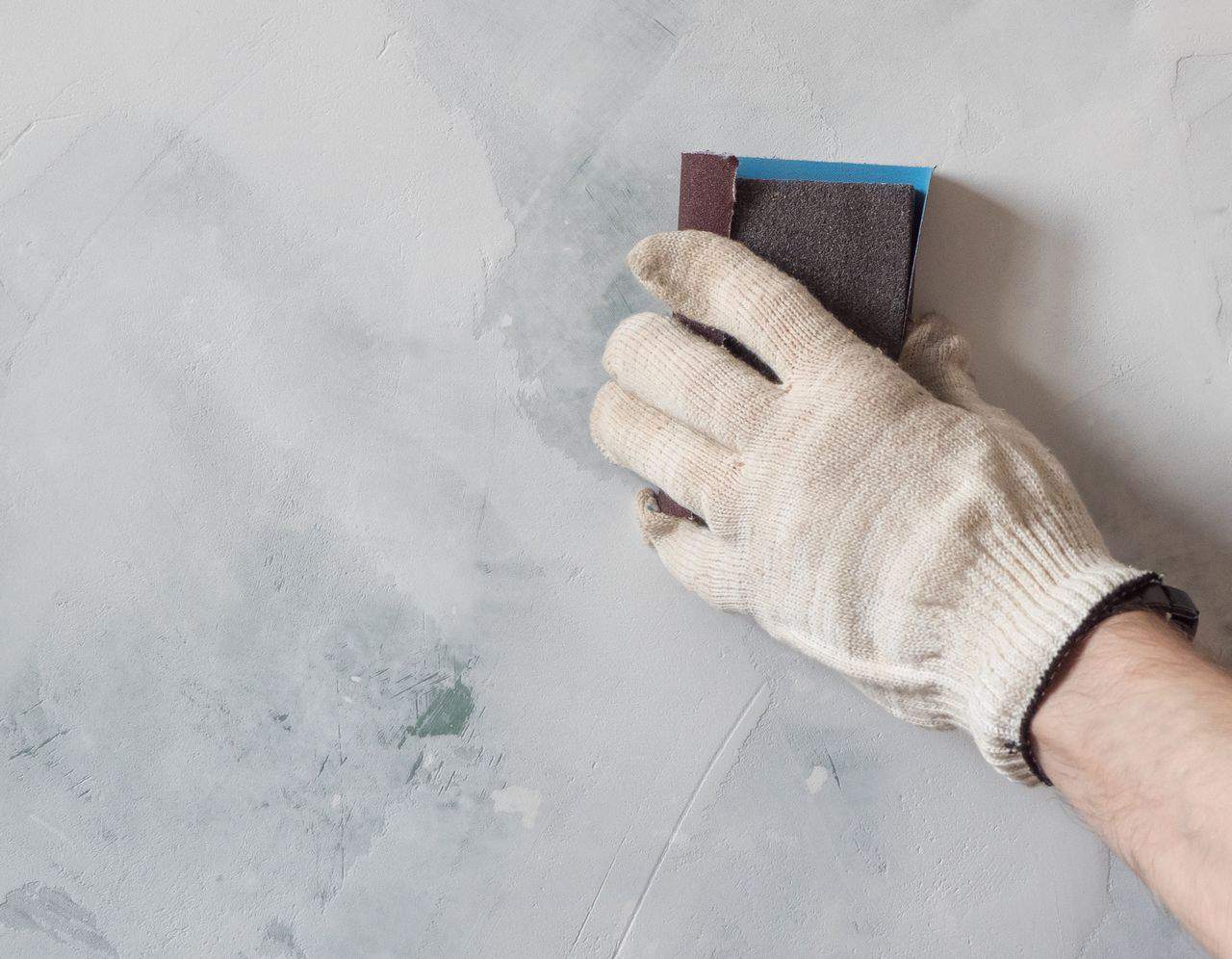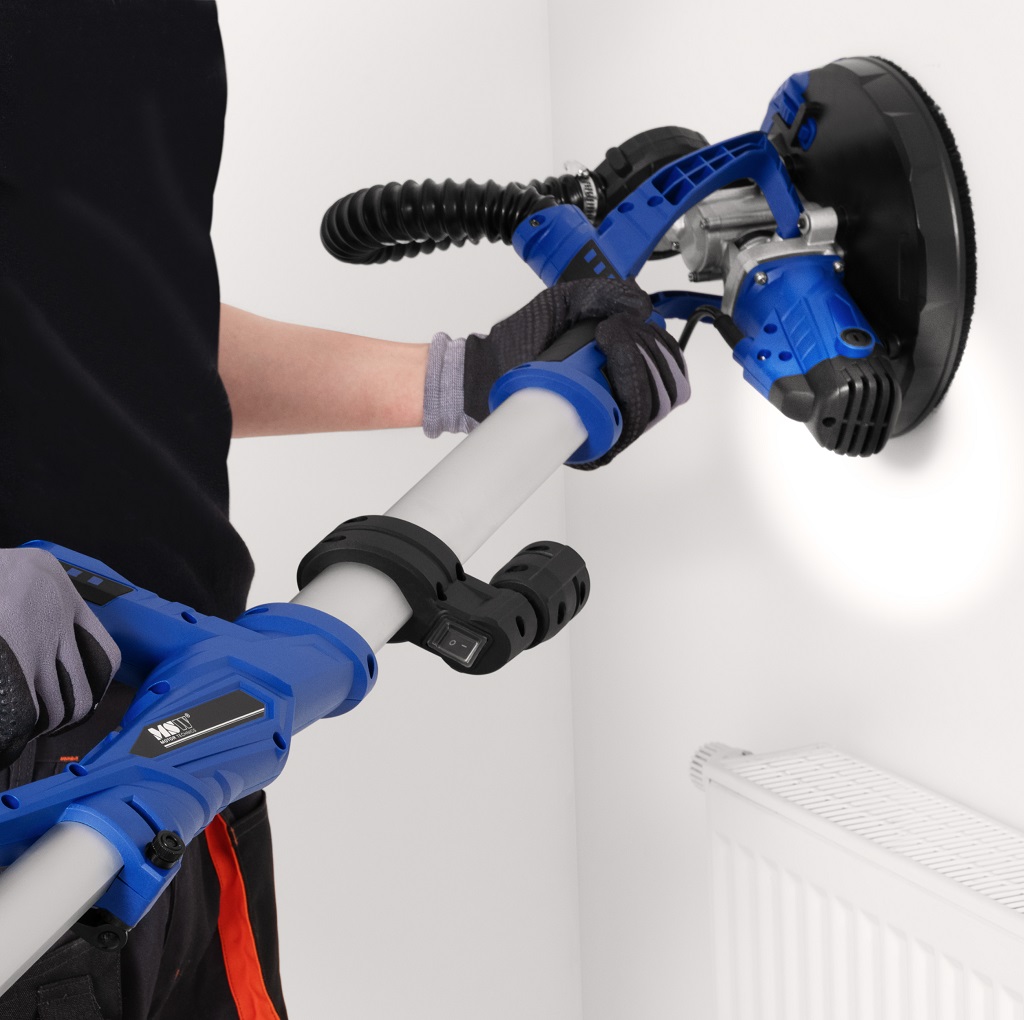Have you ever wondered if you can use an orbital sander on plaster? Well, you’re in the right place! In this guide, we’ll explore whether using an orbital sander on plaster is a good idea or a recipe for disaster. So, if you’re ready to dive into the world of sanding and plaster, let’s get started!
Sanding plaster may seem like a straightforward task, but there are some important things to consider. In the following paragraphs, we’ll uncover whether an orbital sander is the right tool for the job and discuss alternative options you could explore. By the end, you’ll have a clear understanding of whether you can use an orbital sander on plaster and the best way to achieve an impeccable finish. So, let’s roll up our sleeves and delve into the wonderful world of sanding plaster!
When it comes to DIY projects, it’s essential to have the right tools. But before you rush into using an orbital sander on plaster, it’s crucial to understand the potential risks and limitations. Don’t worry, though! We’ve done the research and are here to share our findings with you. So, without further ado, let’s explore the possibilities and discover whether an orbital sander is your go-to option for transforming your plaster surfaces. Let’s get sanding!
Looking to tackle plaster surfaces with an orbital sander? Absolutely! Here’s how:
- Prepare the area by removing furniture and covering nearby surfaces
- Wear proper safety gear like goggles and a dust mask
- Attach a medium-grit sandpaper to your orbital sander
- Sand the plaster surface in smooth, even strokes
- Clean up the dust and debris and finish with a finer sandpaper if desired
Enjoy transforming your plaster surfaces with the help of an orbital sander!

Can You Use an Orbital Sander on Plaster?: Unveiling the Facts
Plaster walls can be a charming and classic feature in any home. However, over time, they may develop imperfections, such as cracks or uneven surfaces, that require sanding. If you’re wondering whether you can use an orbital sander on plaster, you’ve come to the right place. In this article, we will explore the ins and outs of using an orbital sander on plaster, its benefits, potential drawbacks, and provide you with practical tips to achieve a smooth and professional finish.
Understanding Orbital Sanders
An orbital sander is a power tool that operates by a circular or elliptical sanding motion. It is equipped with sandpaper pads, which attach to the base of the sander and rotate at high speeds, making it ideal for achieving smooth finishes on various surfaces. However, when it comes to plaster walls, there are a few factors to consider before deciding to use an orbital sander.
First and foremost, it’s important to evaluate the condition of the plaster. If the surface is severely damaged, brittle, or crumbly, using an orbital sander may not be the best option, as it can further weaken the plaster and cause more harm than good. In such cases, it is advisable to consult a professional plasterer or consider alternative methods, such as skim coating or patching.
Benefits of Using an Orbital Sander on Plaster
1. Efficient Sanding: Orbital sanders are known for their efficiency in removing material quickly and evenly. With the right sandpaper grit, an orbital sander can help smooth out uneven areas and remove imperfections on plaster walls, saving you time and effort compared to manual sanding.
2. Versatility: Orbital sanders are versatile tools that can be used on various surfaces, including wood, metal, and even drywall. This versatility makes them a convenient choice for homeowners and DIY enthusiasts who may have multiple projects around the house.
3. Dust Collection: Many orbital sanders feature built-in dust collection systems or have the option to attach a vacuum cleaner. This helps minimize the amount of dust generated during sanding and creates a cleaner working environment, which is especially beneficial when working indoors.
Tips for Using an Orbital Sander on Plaster
Before diving into sanding your plaster walls with an orbital sander, consider the following tips to ensure optimal results and minimize any potential issues:
1. Prepare the Surface: Before sanding, ensure that the plaster wall is clean and free from any loose debris or protruding nails. Use a putty knife or sandpaper to remove any high spots or bulges that might impede the sanding process.
2. Choose the Right Grit: Selecting the appropriate sandpaper grit is crucial. Start with a coarser grit, such as 80 or 100, to remove any significant imperfections or high spots. Then, gradually progress to finer grits, such as 120 or 150, for a smoother finish. Remember to follow the manufacturer’s instructions for changing sandpaper discs.
3. Take Precautions: As with any power tool, taking safety precautions is essential. Wear protective eyewear, a dust mask, and ear protection to shield yourself from flying debris and excessive noise. Additionally, ensure that the sander is securely held and move it in smooth, even strokes to avoid creating gouges or uneven surfaces.
4. Work in Sections: To achieve the best results, divide the plaster wall into manageable sections. Move the sander in circular or back-and-forth motions, overlapping each pass slightly to ensure even sanding. Avoid applying excessive pressure, as this can lead to uneven sanding or damage the plaster.
5. Regularly Inspect the Surface: Periodically stop sanding and inspect the surface for progress. This will help you identify any remaining imperfections and determine whether additional sanding is required. It is advisable to feel the surface with your hand to ensure smoothness before proceeding to the next section.
6. Clean Up: Once you have finished sanding, it is essential to clean up the dust promptly. Use a vacuum cleaner or a damp cloth to remove any residue on the walls, floor, and surrounding area. This will prevent the dust from being spread throughout the house and ensure a clean finish.
By following these tips and keeping in mind the condition of your plaster, you can effectively use an orbital sander to achieve a smooth and flawless finish on your walls. Remember to exercise caution, be patient, and take breaks when needed. With proper technique and the right equipment, you can successfully restore the beauty of your plaster walls without compromising their integrity.
Key Takeaways: Can You Use an Orbital Sander on Plaster?
- 1. Orbital sanders can be used on plaster, but caution must be taken.
- 2. Ensure the plaster is stable and not crumbling before sanding.
- 3. Start with a low-grit sandpaper to remove rough patches.
- 4. Gradually switch to higher-grit sandpaper for a smooth finish.
- 5. Always wear protective gear like goggles and a mask when sanding plaster.
Frequently Asked Questions
Are you wondering if it is possible to use an orbital sander on plaster? Look no further! Here, we have answered some common questions related to using an orbital sander on plaster. Whether you are a DIY enthusiast or a professional, these answers will guide you in the right direction.
Can you use an orbital sander to sand plaster?
Absolutely! An orbital sander can be used to sand plaster effectively. However, it’s important to prepare the plaster surface before sanding. Start by applying a coat of primer to seal the plaster and ensure better adhesion of the compound. Once the primer is dry, it’s safe to use an orbital sander.
When using the sander, choose a fine-grit sandpaper to prevent excessive material removal and create a smooth finish. Keep in mind that plaster can be delicate, so use gentle pressure and let the sander do the work. Take breaks to check your progress and avoid overheating the sander or damaging the plaster.
What precautions should be taken when using an orbital sander on plaster?
While using an orbital sander on plaster, it’s important to take some precautions to protect yourself and the surface. First and foremost, wear a dust mask and safety goggles to prevent inhalation of fine dust particles and eye injuries. Additionally, consider using a shop vacuum or attaching a dust collection system to minimize the amount of dust generated during the sanding process.
Moreover, be mindful of the speed and pressure applied while operating the sander. Excessive pressure or high speed can damage the plaster surface or create uneven results. Take your time and use gentle, even strokes to ensure a consistent finish. Lastly, clean the sanding area thoroughly after you are done to remove any residual dust or debris.
What type of sandpaper is best for sanding plaster with an orbital sander?
When sanding plaster with an orbital sander, it’s recommended to use fine-grit sandpaper, such as 120 to 220 grit. This type of sandpaper provides a smoother finish and helps remove imperfections without damaging the plaster. Coarser grits can be too aggressive and may result in unwanted deep scratches or gouges.
It’s also a good idea to use sandpaper with a hook-and-loop (Velcro) backing system, as it allows for quick and easy paper changes. This will save you time and improve efficiency during the sanding process. Remember to change the sandpaper regularly, especially if it becomes clogged with plaster residue, as this can affect its sanding performance.
Are there any alternatives to using an orbital sander for sanding plaster?
Yes, there are alternative methods for sanding plaster if you don’t have or prefer not to use an orbital sander. One option is using a sanding block or sanding sponge. These manual tools offer more control and are great for smaller areas or intricate details. They allow you to sand the plaster surface gently by hand.
Another alternative is using a pole sander, which is a long-handled tool with a sanding pad. This can be useful for reaching higher areas or covering larger surfaces more efficiently. Whichever method you choose, make sure to follow the appropriate sanding techniques and precautions to achieve the desired results.
Can an orbital sander be used on all types of plaster?
Yes, an orbital sander can be used on most types of plaster, including lime plaster, gypsum plaster, and drywall joint compound. However, it’s important to consider the condition of the plaster before sanding. If the plaster is crumbling, severely damaged, or has loose sections, it may require repairs before sanding.
Furthermore, it’s always a good idea to test the sander on a small, inconspicuous area to ensure it doesn’t cause any unwanted effects or damage. If in doubt, consult a professional or do thorough research on the specific type of plaster and its compatibility with orbital sanders.

Random orbital sander for plaster- use a hard sanding pad
Summary
Using an orbital sander on plaster can be challenging and may cause damage. Plaster is delicate and prone to cracking, so it’s important to be gentle and use appropriate tools. Hand sanding or using a sanding sponge is recommended for better control and safety. If you really want to use an orbital sander, start with a low-speed setting and gradually increase it as needed. Remember to wear protective gear and take breaks to avoid overheating the sander. Overall, be cautious and consider other sanding options for better results.
